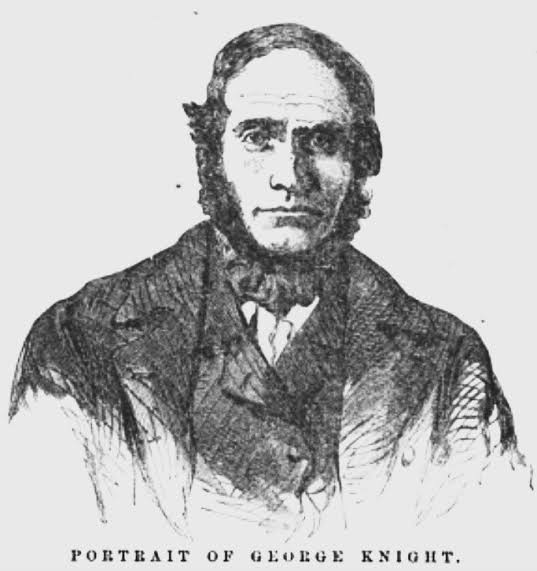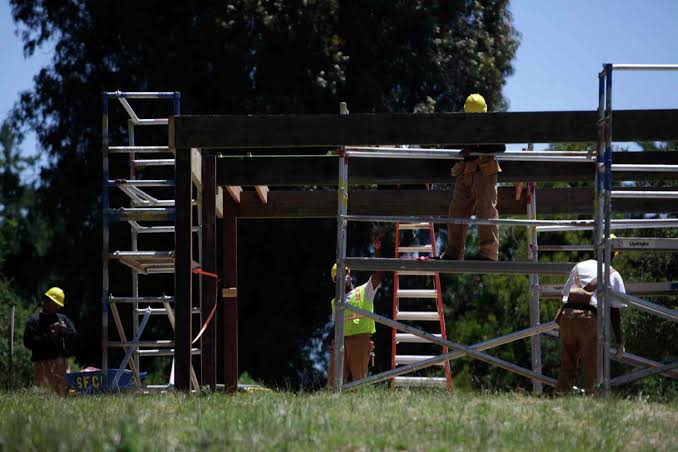
In July 1900, an old man with a trembling hand carefully wrote to a friend from the state prison in Thomaston where he had lived for nearly 43 years. “My health is fair so I work four to eight hours a day in a vegetable garden, a small one for the prison yard,” wrote George Knight, a farmer from Poland who’d been locked up behind stone walls and iron bars since his arrest in 1856 for the murder of his wife. Calling himself a martyr, Knight had long insisted on his innocence in his regular pleas for a pardon or a new trial. A Lewiston Evening Journal reporter noted in the fall of 1900, after reading a handful of Knight’s epistles, that “one can hardly read the words without catching the pathos of his story.” The reporter, probably Holman Day, said the passing time had “brought upon the withered head no sunlight of freedom.
“Still he labors and waits, with death’s hand almost upon his shoulders – waits for a reprieve! Surely, if guilty, George Knight has suffered enough. If innocent – who can redeem to him these 40 or more years?” the Journal’s writer concluded. Advertisement Neither reprieve nor redemption ever arrived. On Dec. 9, 1900, on a Sunday afternoon, the 83-year-old Knight died. The Journal observed that the case that put Knight in prison had been a remarkable one – and one few remembered by the time of the convicted killer’s demise. “The judge that sentenced him is dead. His counsel is dead. The county attorney and the attorney general who conducted the case against him are dead. Dead also are the court officials, and on the jury that tried the case, the scythe of time has fallen heavily,” the paper said. For all that, there is only one death that stands out amid the long life of the old prisoner: Mary Knight, his wife. COLD-BLOODED AND ATROCIOUS Advertisement “One of the most cold-blooded and atrocious murders ever committed in this state,” as the Bangor Daily Whig and Courier put it, occurred shortly after midnight in the darkest hours before dawn on Oct. 6, 1856, in a little house east of Tripp Pond in the town of Poland. There were screams and then silence. Those rushing to help found Mary Knight, 61, a kindly woman well into her second marriage, lying on her side, covered in blood, her throat slit from ear to ear, her head nearly severed. The shocking scene reverberated around a nation that couldn’t quite believe a farm wife in Maine could meet so vicious an end. Knight was born Mary Polly Pratt in Hebron in 1794. She married Solomon Knight, moved to Poland, and had six children with him. She apparently had already one daughter by a previous marriage. In 1840, though, her husband died. She was 46.
Her brother-in-law George Knight, 23 and half her age, perhaps feeling a familial duty, married her. The Journal called him a shrewd man “and his fortune was steadily increasing” because of his business sense and willingness to work hard. The paper said, too, that the big age difference between husband and wife proved problematic, with Knight coming to think “he could marry a younger woman if he were free.” At the time of the murder, seven people lived in the household: Mary and George; his elderly mother, Lucy Knight; Hannah Partridge, 13, a servant; Sidney Verrill, 10, indentured until he became an adult; Harriet Jordan, Mary Knight’s adult daughter; and Dennis Bragdon, 17, who was working for the Knights. Jordan and Bragdon were away that night. Partridge recalled that George Knight left sometime after 7 p.m. to take a load of shingles to Gray on a cart pulled by oxen. He said he’d be away until morning. A neighbor, Israel Herrick, said Knight showed up about 8:40 p.m. to pick up the shingles. Within a couple of hours, he had loaded them up and headed off down the road.
Nobody saw him again until well after midnight when two neighbors caught up with him as he approached Gray with his load of shingles.
They told him his wife had been slain.
Instead of rushing home, Knight finished his delivery.
GEORGE KNIGHT ARRESTED






